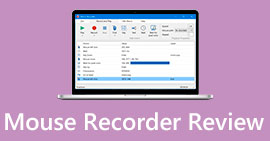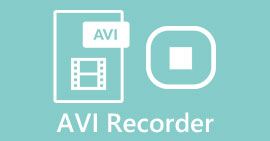Edit M4A Files For Windows, macOS, Online, and Mobile Phones
As the M4A file is not designed for all devices, so many audio editors struggle to handle this audio file format, resulting in difficulty for users to modify them. M4A is basically supported by all devices, it works a bit lighter on your devices as it is compressed, ensuring a smaller space, and tends to have decent audio quality. Fret not, as editing M4A files is still possible with our carefully selected software tools for Windows and macOs, online tools for web browsers, and mobile applications.

Part 1. Edit M4A Files on Windows 11/10/8/7 and macOS
1. All-in-One M4A Editor
This FVC-picked Video Converter Ultimate is a versatile and easy-to-use M4A editor. It is a software-based tool and is considered to be an all-in-one M4A editor as it houses features such as an M4A cutter, merger, compressor, noise remover, volume booster, etc. Having to function as both an audio and video editor with a simple interface, this is exceptional software for both Windows and Mac devices. To help you get started with the all-in-one M4A editor, here’s a quick guide to help you navigate the software effectively.
Step 1. Download and install the FVC-picked Video Converter Ultimate to your desktop.
Free DownloadFor Windows 7 or laterSecure Download
Free DownloadFor MacOS 10.7 or laterSecure Download
Step 2. On the tool interface, click on the Add Files button to add your M4A file to the software.

Step 3. You can now edit your M4A file by selecting the Edit and Cut tool, which is situated just next to your uploaded M4A file after it has entered the tool.

Note: Click on the Magic Wand icon if you want the Volume Booster and Audio Delay function to your M4A file.

Otherwise, click on the Scissors icon to use features such as Add Fade, Cut, Split, and Merge effects to your M4A file.

Step 4. After successfully editing and cutting your M4A file to your liking, click the Convert All button to start downloading it to the folder you've specified on your desktop.
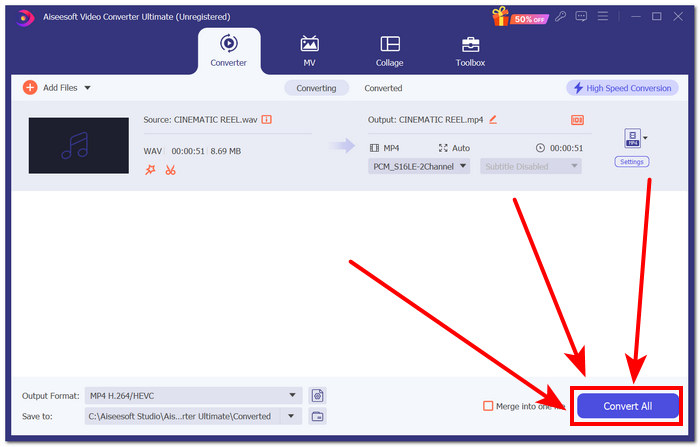
The FVC-picked software truly lives up to its reputation as an all-in-one M4A editor tool. The tool surprisingly supports a wide range of audio and video formats, such as MP3, M4A, MP4, AAC, WMA, WAV, and more. In addition, users are ensured to always get a high-quality export as the tool offers limitless file size upload with a high-speed export technology for faster processing and exportation of your WAV file while maintaining the quality of the file.
2. Open-Source and Powerful M4A Editor
An open-source M4A editor, Audacity, that can also be used for recording is no other than the popular Audacity. With years of expertise in audio production, this program is the most well-liked and widely used tool on the list. It is well-known for its ability to record music, edit, mix, and combine songs. It can also be used to edit and produce an M4A file for use in podcasts. Its compatibility with other file formats, WAV, MP3, MP2, and so on; also makes it a flexible tool for effortless M4A editing and recording.
Step 1. Download and Install Audacity to your desktop.
Step 2. Once Audacity is installed, open the software. In the interface, open the M4A file you want to edit by clicking on the File section located in the upper-left corner of your screen and proceeding to click Open.
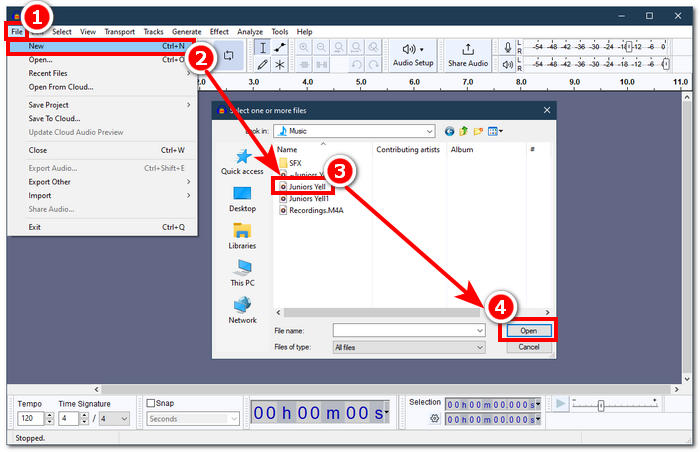
The FFmpeg plugin is needed to use M4A files with Audacity. Be sure you install the plugin before proceeding to M4A editing.
Step 3. Once the M4A file is uploaded to the tool, you can edit it using the featured tools.
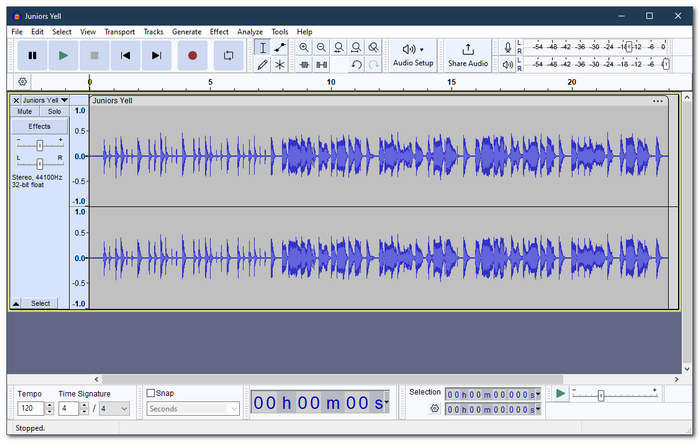
Note: To create cuts, delete parts, apply effects, copy, paste, duplicate, or merge audio tracks in Audacity, click on the Edit section located in the upper-left menu of the tool. To modify the volume, apply fade effects, adjust pitch and tempo, and more, be sure to click the Effect section located in the same section.
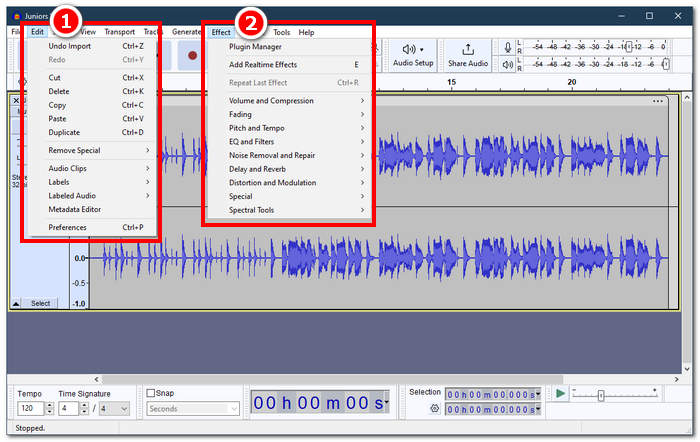
Step 4. Once you are satisfied with all the changes you made in your M4A files, proceed to export your audio through File > Export Audio.
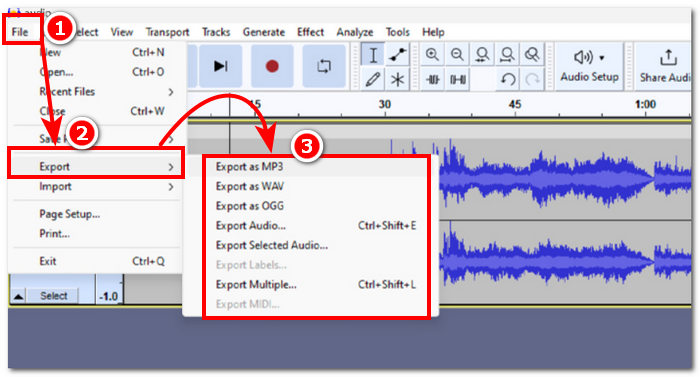
For simple M4A editing, Audacity is an excellent application because it's cost-free and facilitates efficient work. Additionally, the color tracking characteristics are useful since they enable multitracking of the labeling portions. The drawback of working on numerous tracks at once is that the program can only manage a certain amount of tracks at once.
Part 2. Edit M4A Files Online
To edit M4A files using an online or web-based tool, Aspose Audio Cutter presents an ideal solution for instant and rushed M4A editing. Specifically used for creating precise cuts to an M4A file, this web-based tool supports formats such as AAC, AIFF, FLAC, M4A, MP3, WAV, and more. This tool simply works by uploading your M4A file and selecting a specific time/duration to your M4A file you wish to cut and save.
Step 1. Go to Aspose Audio Cutter's official website.
Step 2. Upload or Drop the M4A file you wish to edit using the tool in the field provided on the website.
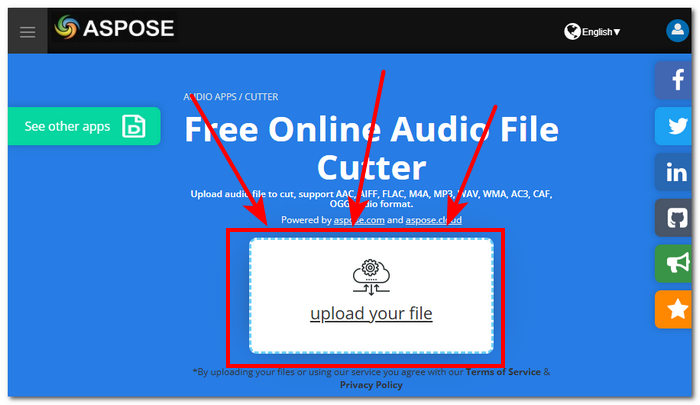
Step 3. Input your desired Cut Start and Cut End to precisely exclude the parts in your M4A you wish to remove, and simply click on the Cut button to start the process.
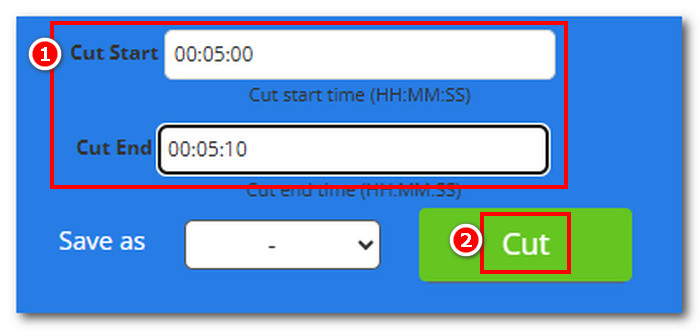
Step 4. Once you have cut your M4A file, click the Download Now button to save it to your desktop.
You can open it in your M4A player to check the effect.
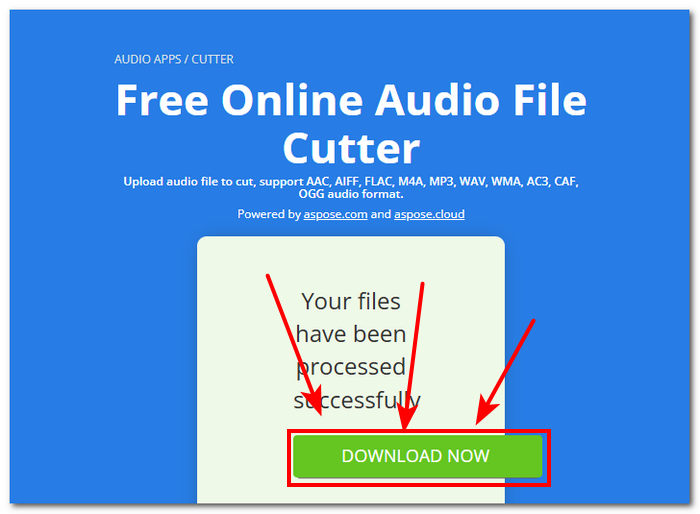
Aspose Audi Cutter is indeed a user-friendly tool with a straightforward interface specifically made for creating a precise cut to M4A files. The service is fast, and no application installation is required to use it. Hence, its features are only limited to cut features and cannot do other M4A editing tasks such as adding fade effects, trimming, splitting, and more.
Part 3. Edit M4A Files on Mobile Phones
Inspired by its desktop software version, WavePad mobile has the same interface, which makes it easier to become familiar with the app. This mobile app is free to download on Android and iOS devices, with wide support for audio formats to ensure the tool's versatility when editing audio files. Additionally, its M4A editing capabilities offer a wide range of features and effects, such as cutting, trimming, copying, pasting, inserting, silencing, and auto-trimming your M4A file effortlessly.
Step 1. Go to your mobile app store and download WavePad mobile there.
Step 2. Once the app is installed, load your M4A file into the app by clicking on the Open icon located in the upper part of your app’s interface and wait for it.

Step 3. Once your M4A is loaded in the app, proceed to explore the app’s features to edit your M4A file. You can do so by placing your finger at the top-most part of the tool and swiping your finger from right to left to see features such as cut, copy, join, paste, and more. Once you find the tools you need for your M4A file, just click on them to apply them to your M4A file.
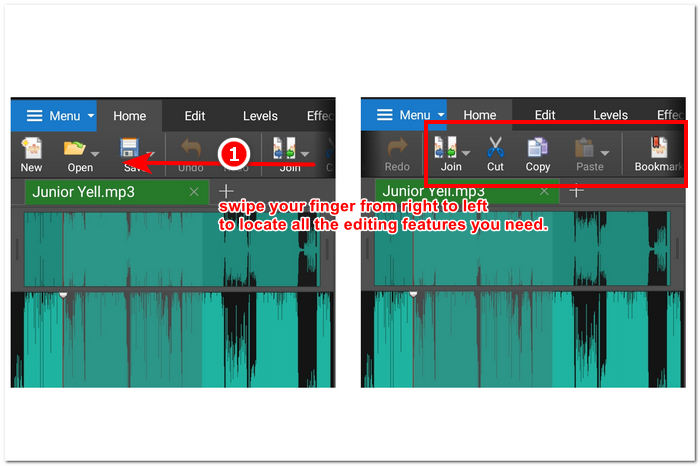
You can also explore and view other effects and features available to edit your M4A file by swiping your finger from right to left in the field where the Edit section is located. There you can apply effects to your M4A file and more.
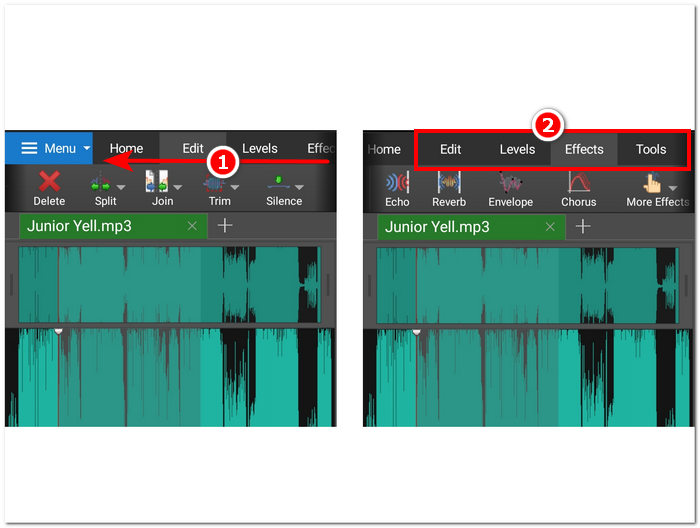
Step 4. Once you are done editing your M4A file, go back to the Home section, click on the Save button, and click Save File to download your edited M4A file to your mobile device.
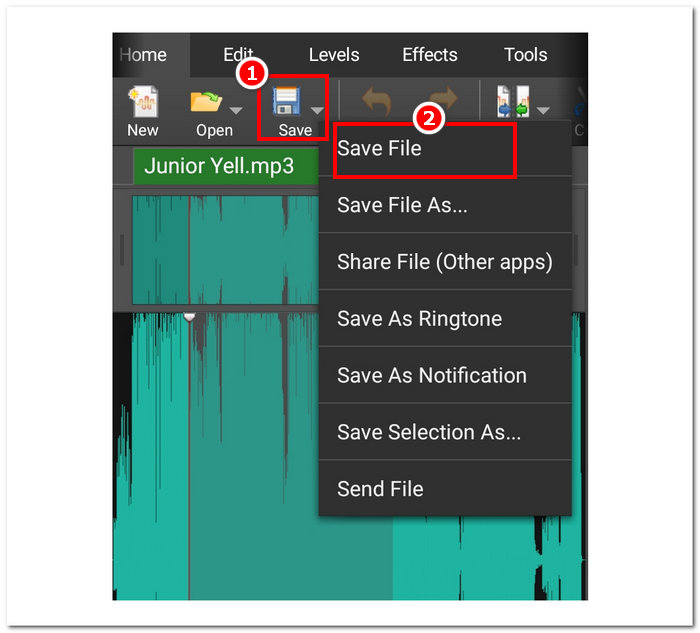
That said, WavePad mobile is surely a powerful mobile M4A editor app that allows users to do almost anything possible with their M4A files. This app is ideal for users who only have mobile devices and are always on the go.
Part 4. FAQs about How to Edit M4A Files
Is M4A worse than MP3?
It is not considered worse than MP3, but depending on the purpose, M4A typically offers a better quality and at the same time, better bitrate due to its advanced compression algorithms. For more differences between M4A and MP3, you can find it here.
What are the disadvantages of M4A?
M4A files are not widely supported by devices and platforms, so you will need to use a converter tool before you can use them. In addition, users often encounter compatibility problems when using M4A as an audio file, which makes it not an ideal file to work with, especially when sharing.
Is there free software to convert M4A to text?
Yes, there are tons of free software to convert M4A, such as Google Docs Voice Typing and Otter.ai. These tools are reliable as they integrate a speech recognition technology to transcribe audio files in this M4A files to text.
Can I convert M4A files to other formats after editing?
Yes, many M4A editors, like the FVC-picked Video Converter Ultimate, have a built-in converter tool that allows users to save or export the edited M4A files with different audio formats.
How do I ensure the quality of my edited M4A file is maintained?
To ensure you always have the highest-quality export when saving your edited M4A files, be sure to avoid excessive compression and make sure to use trusted tools that support a lossless export quality,
Conclusion
Due to compatibility concerns and limited support from certain audio editors, editing M4A files across several platforms, including Windows, macOS, internet tools, and mobile phones—can be difficult. M4A files provide a great compromise between quality and compression, making them effective for storage while retaining respectable audio fidelity, in contrast to widely accepted formats like WAV. However, you can easily edit your M4A files, guaranteeing high-quality output and a variety of editing choices, with the correct tools and programs, such as the desktop version of FVC Video Converter Ultimate, the web version of Aspose Audio Cutter, and the mobile version of WavePad.



 Video Converter Ultimate
Video Converter Ultimate Screen Recorder
Screen Recorder
